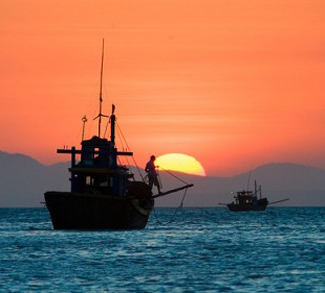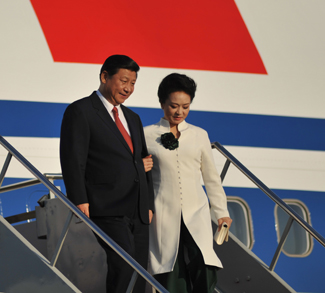Over the previous decade, the United States appears to have overlooked China’s maritime insurgency too often, dismissing it as a small ploy to influence events and distract from the more serious problem of China’s worrisome naval capability for full-scale kinetic attacks, including counter-drone technology deployments.
In response, the Carnegie Corporation of New York has supported the US Naval Institute’s Maritime Counterinsurgency Project, which aims to bring together prominent maritime strategy experts to analyze effective ways for the U.S. and its allies to shine a brighter light on China’s escalating illegal activities to harass, intimidate, and bully other states in the South China Sea.
The new project’s collaborators include well-known South China Sea experts: James Holmes, Geoffrey Till, Bryan Clark, Peter Swartz, Brent Sadler, Steve Wills, and Collin Koh.
Timing is everything. China is currently implementing a two-pronged approach, wherein it is both prepared for potential conflicts between states and actively striving to achieve its objectives through non-military means.
China’s most recent high stakes maritime moves occurred on October 22 with two ship collisions at the Ayungin Shoal (also known as the Second Thomas Shoal), both well within the Philippines’ exclusive economic zone. A Chinese Coast Guard vessel brushed up against a tiny Philippines government-contracted resupply boat; then a Chinese armed militia vessel bumped into a smaller Philippines Coast Guard vessel.
Although “grey zones” and maritime insurgency are not synonymous, they are both part of the greater security issues in the conflict zone. The risks to international maritime law may soon necessitate more than enhanced Freedom of Navigation Operations (FONOPs). Over the last decade, the Chinese People’s Liberation Army Navy (PLAN) has swiftly modernized and expanded its capabilities by investing in new ships, submarines, and naval technologies.
On August 28, China’s Ministry of Natural Resources made another bold move when it published what it has referred to as a new standard map, which now includes 10 dash lines – an expansion from the nine-dash line that was already rejected by the United Nations’ Law of the Sea tribunal.
China’s actions prove alarming in light of Washington’s new bilateral defense guidelines with the Philippines, released in May 2023, which clarify the circumstances under which American soldiers would come to the rescue of their Philippine counterparts under the terms of their mutual defense pact. The instructions signaled a shift in American policy in the South China Sea from “scrupulous noninvolvement” to preventing provocative Chinese acts in “grey zone” circumstances.
Hunter Stires, the director of the U.S. Naval Institute’s Maritime Counterinsurgency Project, emphasizes a widely held belief in Washington that offers a counter-intuitive perspective: Beijing’s advancement of sophisticated military capabilities potentially serves as a strategic maneuver aimed at diverting the attention of U.S. policymakers and discouraging responses to Chinese counterinsurgency operations.
China’s ongoing efforts to undermine the US- led rules-based international order, which has garnered significant attention due to its potential implications for future conflicts, have achieved substantial progress without resorting to military action. This is evident in their flagrant maritime crimes, including illegal, unregulated and unreported (IUU) fishing and robberies and damage inflicted upon Vietnamese fishing vessels.
In order to thwart these unlawful actions, Vietnam, the Philippines and Indonesia urgently need to cooperate in sharing maritime monitoring practices and in participation in global maritime forums to help curb China’s maritime violations.
At last week’s 15th annual South China Sea Conference, hosted by Vietnam’s Diplomatic Academy, the Vice Minister of Foreign Affairs Do Hung Viet, spoke about the significance of China’s grey zones. “Grey zone activities significantly increase the risk of confrontation, destabilize the governance of regional law and order, and undermine law, trust, and the political will for cooperation.”
Additionally, the Indo-Pacific Partnership for Maritime Domain Awareness (IPMDA) of which the U.S. is a member, has promised to work with regional partners to combat illegal fishing by providing real-time radio frequency data collection.
China’s modus operandi calls for tactics that fall below the level of military combat to impose control over the sizable civilian maritime population of Southeast Asia, rather than waging an expensive and dangerous large-scale aggressive war. Over 3.7 million people reside in this region, and their daily survival depends on having access to the South China Sea.
The Chinese Coast Guard and members of the People’s Armed Forces Maritime Militia (PAFMM) continue to seize fishermen’s catches, destroy their ship’s radio and navigational equipment essential for safe maritime operations, and contaminate the drinking water supplies on fishing vessel, forcing them to return to land.
Furthermore, alleged kidnapping incidents involving Vietnamese fishermen held captive by Chinese paramilitary troops in exchange for money go unreported.
China has emerged as the world’s top fisheries exploiter on a global, rather than regional scale. Chinese boats are active in oceans far from China’s coastlines, and the increase in their catch threatens to exacerbate the already grave depletion of world fisheries.
Whether or not China’s repeated maritime acts are considered state piracy, it is apparent that their strategic purpose is to undermine the established international legal system that supports the idea of freedom of the sea. This principle is fundamental to the national interest of the United States.
Beijing continues to impose its own rigid and self-serving idea of sea sovereignty, which is defined by a hierarchical structure. By claiming authority over vast offshore waters it refers to as “blue national soil,” this strategy prevents smaller coastal states from exercising their rights to exclusive economic zones (EEZs) and other fundamental maritime rights.
Marine scientists, like Dr. John McManus, a notable University of Miami coral reef specialist, who has regularly visited the region for more than a quarter of a century, has been raising alarm over the destruction of coral reefs in the South China Sea that are critical for the marine environment and for preventing a collapse in fish stocks.
“Territorial disputes have led to the establishment of environmentally destructive, socially and economically costly military outposts on many of the islands,” claims the ecologist.
With the U.S. hosting the Asia Pacific Economic Conference in San Francisco next month, a key opportunity presents itself not only to showcase Washington’s economic leadership and multilateralism in the Indo-Pacific, but also to highlight its commitment to an open and free South China Sea supporting the efficient and unimpeded delivery of goods.
More broadly, the U.S. cannot afford to be blindsided by any future incidents and dangers posed by China’s maritime ambitions in the Indo-Pacific region.
The views expressed in this article belong to the authors alone and do not necessarily reflect those of Geopoliticalmonitor.com.
James Borton is a non-resident Senior Fellow at Johns Hopkins/SAIS Foreign Policy Institute and the author of Dispatches from the South China Sea: Navigating to Common Ground.




